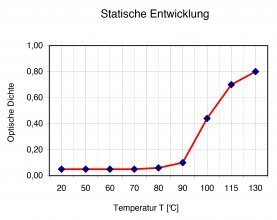- Print image: Black
- Sensitivity: Standard
- Print speed: Up to 250 mm/s, depending on printer and setting
- Lifetime of the printed image: 10 years *)
- Typical applications (examples): Boarding-, entrance- and parking cards, composite materials, logistics
*) In compliance with the general storage and handling principles (see below, "General information")







